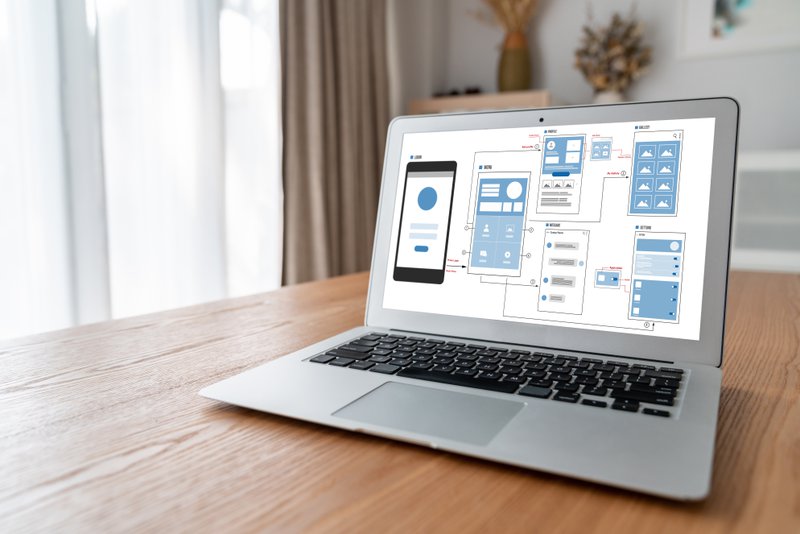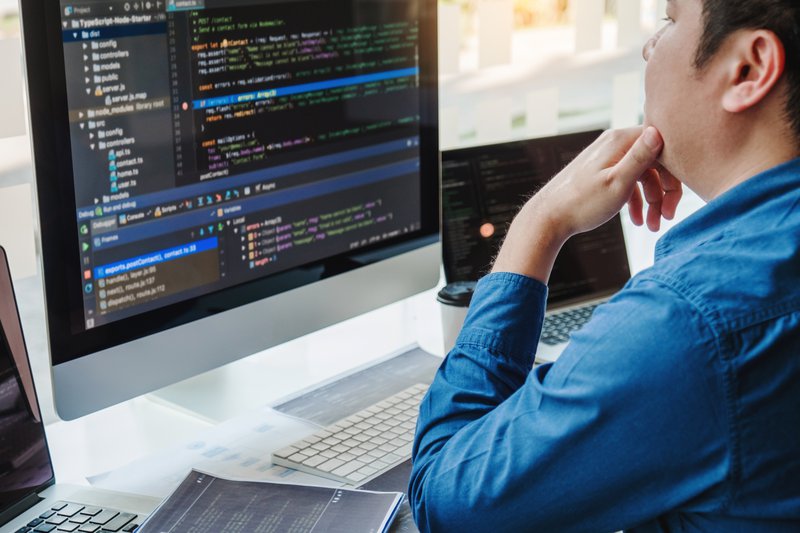Headless commerce is the most recent trend in online retail, separating a storefront's front-end architecture from its back-end functionality. As the eCommerce industry becomes more competitive, this approach aims to provide greater flexibility and customization to businesses looking to stand out in the market.
Technological advancements continue to drive the need for improved online touchpoints, and headless commerce is quickly gaining traction in 2023 as a solution to meet these demands.
The front end of a digital storefront refers to the technical architecture that the customers see and interact with. It can comprise multiple channels, including social media pages, storefronts, apps, or Internet of Things (IoT) devices.
The back end of a store refers to all the systems, workflows, tools, and processes that manage the digital business, such as checkout transactions, data intake, and fulfillment.
Separating these two functions ultimately increases the adaptability of the customer interface without causing technical complications. However, headless commerce is also giving rise to progressive web apps, enabling omnichannel experiences and generating further improvements in terms of personalization. So, let’s learn how you can use headless architecture to stay ahead of the curve.


The Benefits and Challenges of Headless Commerce
The subsequent system transformations that come with advancements in technology aren’t always seamless. Companies typically face a rough period as they adapt their workflows to the new system.
Although, if the benefits that come from full implementation outweigh the costs of starting up and the potential negative attributes of the upgrade, adopting the new technology will ultimately generate a positive ROI. So, let’s examine the pros and cons of headless commerce:
Pros
- Increased Personalization: Your customers’ data can be used to customize their recommendations, offers, and browsing options—but only if the data is centralized and easily accessible. Data silos within traditional systems can prevent true personalization, but headless commerce empowers retailers to change the content layer more readily through its more adaptable and agile framework.
- Added Agility: The decoupling of the front and back ends of an eCommerce website allows retailers greater flexibility and faster time to market with customer experience variations. Put simply, altering the front end without compromising the functionality of the back end is easy with headless systems. This allows retailers to experiment more with their customer interface and test the efficacy of various promotions, layouts, or discounts.
- Simple Integrations: Headless commerce enables seamless integrations through application programming interfaces (APIs), which can transfer data between different software platforms. Plus, just as optimizing the front end without impacting the back end is easier, the separate nature of headless systems empowers retailers to work on their internal functionality without compromising their customer experience.
- Unified Experience: Modern customers use multiple different devices to carry out their shopping. This presents a challenge for legacy systems that just can’t support some sales channels. However, headless solutions allow companies to create their own front-end sales channels.
Cons
- Technical Complexity: There are more moving parts to a headless commerce system than its traditional counterpart. This means companies might need to bring on a dedicated team to manage multiple applications. The fact that headless solution often has fewer built-in features and functionality can compound this issue.
- Initial Costs: Purchasing the necessary tools for both the front and back ends of a headless system can sometimes come at a higher cost than monolithic systems. Also, companies may potentially need to bring on additional teams with the technical expertise to manage a headless system.
- Fragmentation: It’s critical to ensure that the front and back ends of a headless system are working seamlessly to provide a smooth user experience.


The Impact of Headless Commerce on Customer Experience
One of the most valuable benefits of headless commerce is its increased ability to refine and optimize customers’ experiences with your website. The reality is that traditional systems aren’t designed to manage the shopping habits of the modern customer, who will jump between devices, pages, and touchpoints all within one shopping session.
They expect their experience to be consistent throughout all these interactions. The omnichannel capabilities of headless solutions can better meet this demand.
Centralizing all customer data on the back end is possible in a headless system, allowing developers to create different channels all backed by the same information. This means that customers will be able to jump between touchpoints in a unified manner.
Furthermore, this enables a more individually tailored shopping experience, as customers will automatically be presented with relevant deals, promotions, and offers based on their purchasing history.
Finally, traditional systems funnel all your web traffic through your back-end server, significantly slowing down processing speeds. On the other hand, headless solutions allow your static content to be shown directly through a content delivery network (CDN). Customers won’t need to be hosted on the back end unless they interact with dynamic content. This unclogs your system and enables much faster load times.
Headless Commerce Trends to Watch Out For
Granted, headless commerce isn’t a one-size-fits-all solution. It’s a multifaceted technical system with diverse features and trends. Of course, this is part of the appeal because eCommerce websites can customize their implementation of solutions. However, some trending features, approaches, and applications are likely to become best practices in the eCommerce space by the end of 2023.


While you’ll want to focus on the features that are most applicable to your unique needs, it’s also important to be aware of what competitors are widely implementing. Customers will begin to adapt to and expect the latest technology as an industry standard; however, companies that are quick to offer popular features will gain an advantage over later adopters.
Now that you have a more nuanced understanding of headless commerce, let’s consider what makes it special in 2023.
Progressive Web Apps (PWA)
A progressive web app (PWA) is a front-end architecture design that offers customers a more advanced user experience.
PWAs essentially bring traditional apps' functionality and sleek design to customers accessing an eCommerce business through their web browser. This enables advanced functions like marketing push notifications, SEO friendly-design, instant updates, hardware integrations, and even offline access to your platform.
Furthermore, PWAs offer more stringent security than native apps because they rely on HTTPS protocols.
PWAs are supported by major browsers like Google Chrome, Microsoft Edge, Safari, Firefox, and Opera, making them simple to implement. Additionally, they are currently the gold standard as far as user experience, because they combine the best features of both mobile and web shopping.
Of course, mobile eCommerce is evolving at lightning speed. However, PWAs continuously prove to be one of the best ways to optimize user experience, and for that eason, they’re quickly becoming a staple for eCommerce platforms in 2023.


API-First Approach
APIs serve as the glue between different independent applications. At their core, they act as an intermediary between tools in your tech stack to enable smooth communication for a more cohesive system.
Now, an API-first approach puts interoperability ahead of implementation. In simple terms, this means that instead of patching together pieces of software as an afterthought, eCommerce retailers prioritize the system’s communication networks between software first.
Companies are deploying standalone microservices that provide functions such as search, payments, or carts within a system designed to be orchestrated by the API. This allows the API to send and receive limited, necessary data requests. Best of all, it streamlines the production of outcomes and reduces the complexity of the system as a whole.
The API-first approach allows companies to integrate or update their CRM, CMS, payment gateways, inventory management systems, or any other tool within their tech stack faster and more seamlessly. This, in turn, allows for more efficient upgrades to the user experience.
Microservices Architecture
Of course, as API first approaches take off in 2023, microservices architecture also grows in popularity. As a reminder, microservices services are small and specific functions like cataloging, managing inventory, checkout processes, and receiving payment.


Switching from a monolithic system structure to a more interconnected network of independent services through APIs generates multiple benefits. The switch generates the foremost benefit of an increase in agility, as it enables upgrading or working on each functionality without disrupting the system as a whole. Although, several other advantages come with a microservice system:
- Stability: If one microservice fails it doesn’t impact the rest of the system.
- Specialization: As each service can be individually selected, eCommerce websites are able to pick more specialized tools.
- Scalability: It’s much easier and more cost-efficient to scale individual microservices rather than an entire system vertically.
Personalization and AI
Personalization is one of the foremost eCommerce marketing trends in 2023. Customers expect to receive promotions, offerings, and product suggestions that align with their individual interests without searching for them.
Headless commerce enables personalization because the decoupling of the front and back ends of the system enables greater customization of the user interface. Delivering a personalized shopping experience to the customer across multiple channels is possible by using customer data stored in the back end.
Furthermore, AI recommendation engines and personalization tools can be incorporated with headless systems. Machine learning and AI models collect data from multiple touchpoints on individual customers and amalgamate it into distinct user profiles. These models can generate not only specific deals and product offerings but also predict future behavior.
Omnichannel Experiences
In the modern digital space, thousands of different sources are pulling your customers' attention. That is to say that your brand has just a moment to capture the interests of your target demographics.
Requiring additional steps like a channel change to make a purchase or meaningfully interact with your brand could be more effort than competitors are asking for. Needless to say, ease and convenience drive sales, which is why there’s an increased emphasis on omnichannel experiences in 2023.
An omnichannel experience aims to unify the customer experience across different interfaces such as social media, websites, email, text, and mobile. Headless commerce systems are especially conducive to forging a unified experience across multiple touchpoints.


Security Considerations for Headless Commerce
The complexity of the headless commerce system design inevitably means better security, too. The traditional monolithic structure of eCommerce websites allows hackers to reach the back end of your website by breaking in through the front.
On the other hand, in a decoupled system customer data can’t be reached through the public-facing user interface as easily. However, this isn’t enough to protect valuable data in the age of eCommerce.
Hackers are always creating highly sophisticated ways to disrupt your business. For example, some of the most common tactics bad actors use include cross-site scripting, SQL injection, and cross-site request forgery.
It's important to consider additional security measures for your headless commerce system to ensure safe user information flow. Here are some common pain points to be aware of, and some solutions to shore up your defense:
- User Authentication: Hackers can navigate around authentication barriers if client credentials are stored insecurely in a device’s physical storage. Using secure shopper login APIs can avoid this breach.
- Storefront: While a headless storefront is more secure than its traditional counterpart, it’s still open to attack. So, make sure that your teams are using HTTPs in API calls as well as an application firewall.
- Personal Data Protection: It’s necessary for eCommerce websites to store personal data, but this does necessitate additional security measures. So, make sure you’re in total compliance with applicable federal and state laws regarding data protection.
Start Your Headless Commerce Journey With Mobiecom
Headless commerce is at the top of digital retail’s 2023 trend list for a good reason. The long benefits it brings—including but not limited to greater efficiency, scalability, security, and customer experience—can hugely boost ROI for eCommerce websites.
Ultimately, as more and more retailers adopt these decoupled systems, customers will come to expect the added ease and customization of headless technology. So, it’s likely that headless solutions will become an industry-standard in the next few years. Forward-thinking eCommerce storefronts should aim to get ahead of the curve by upgrading their systems now.
Customer experience is the key to success in eCommerce, which is why Mobiecom is making it easy to improve website performance with its many optimization tools. Learn more about the Mobiecom headless commerce solution here.